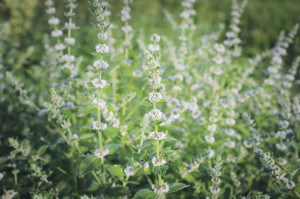Going eco-friendly has never been more essential for our planet. Adopting greener practices helps clean the air, helps limit erosion, improves soil, and reduces pollution and global temperatures at the same time. 
But going green has some other advantages, too. Green practices can help your property stand out over competitors, create community spaces, and attract new guests or tenants, depending on your industry.
But being eco-friendly goes beyond turning off the lights when you leave the room or recycling those old cardboard boxes. Think bigger with eco-friendly landscape architecture.
What’s even better? We can help you get there. Our experts have experience in designing parks, community green spaces, universities and colleges, and retirement communities, among many other large-scale projects.
Not sure what eco-friendly landscaping looks like? We have a few ideas to get you started.
1) Replace grass with ground cover.
Unfortunately, grass is not great for our ecosystem. Most lawns and green spaces are made from Kentucky Bluegrass and ryegrass and unfortunately, these species are not native to the U.S.
Because these grasses are not native, they chock out critical native plants and flowers. This, in turn, creates an ecological wasteland for pollinators like birds, bees and butterflies. Grassy areas, too, require more labor, fuel and equipment than even most industrial farming crops, which means they cost you big bucks to keep them looking green and lush.
Instead of traditional grass, consider alternative ground covers. There are lots of options for grass alternatives. Of course, some individuals who live in hot climates opt for rock or turf. You can also choose groundcover plants. These plants stay green in almost all weather and require virtually no maintenance. They are generally better for the environment because they provide habitats for birds, bees and other pollinators. They also have deeper root systems that help aerate the soil and prevent erosion. They also require little mowing, no additional watering, and no pesticides. What could be better than that?
In shady parts, moss is a great option. Moss stays green even in the highest summer temperatures and is a soft cushion under feet. In sunnier locations, clover works well. It stays green even under drought conditions and is soft and sweet-smelling. It can also prevent soil compaction. Some options include Corsican mint or clover. Flowering options include sweet woodruff, horned violets or ornamental native grass.
2) Plant a native garden.
You may also want to opt for a native plant garden.
Native gardens add beauty and personality to your land. These colorful, lush gardens are aesthetically pleasing and attract birds, butterflies and other wildlife. Because of this, they make great community gathering spaces. If you own a residential space, church or retirement community, these are great options.
Native plants, too, are resistant to pets and disease a result, they do not need fertilizer, watering, or pesticides, making them low maintenance and low cost.
3) Plant an edible garden.
Gardens aren’t just for individual homes. These are also great community options, too. Edible gardens can be found everywhere from apartment complexes to retirement communities to even community parks and major universities.
These, too, bring a sense of community and a place for individuals to gather. Growing your own produce also helps reduce carbon emissions and other waste from store-bought produce. You can also avoid harsh chemicals and pesticides when you grow your own food. Like other options, this is great for bees, butterflies and other insects.
You can also incorporate composting, too. This is a great way to recycle food waste and get others involved in the space.
We can create an elegant display for your future garden.
3) Add terraces or slopes.
If you’re looking for a different public aesthetic, consider natural terraces or slops. Sometimes this idea is referred to as terrace farming. This method involves creating “steps” in hilly or sloped land. Plants and gardens can then be planted and grown on the slopes. Because of the unique design, rainwater supplies the only irrigation needed. When it rains, water flows from one terrace to the next.
This ultimately saves on the water in the long run. This is also an effective solution to prevent erosion and is a beautiful, elegant option for your landscape.
This idea can be used on a large scale or in a space as small as a traditional garden or planting box.
Ready to get started?
Our landscape architects are here to help create a more eco-friendly landscape on your property. We have decades of experience in both the public and private sectors providing clients with design and technical direction every step of the way.
Our portfolio includes civic, university campuses, residential and commercial projects. Our state-of-the-art software allows us to provide our clients with an accurate representation of our plan and project, allowing for better cost control and precise scheduling.
Check out our website to see a list of our past projects. Contact us to get your project underway!








